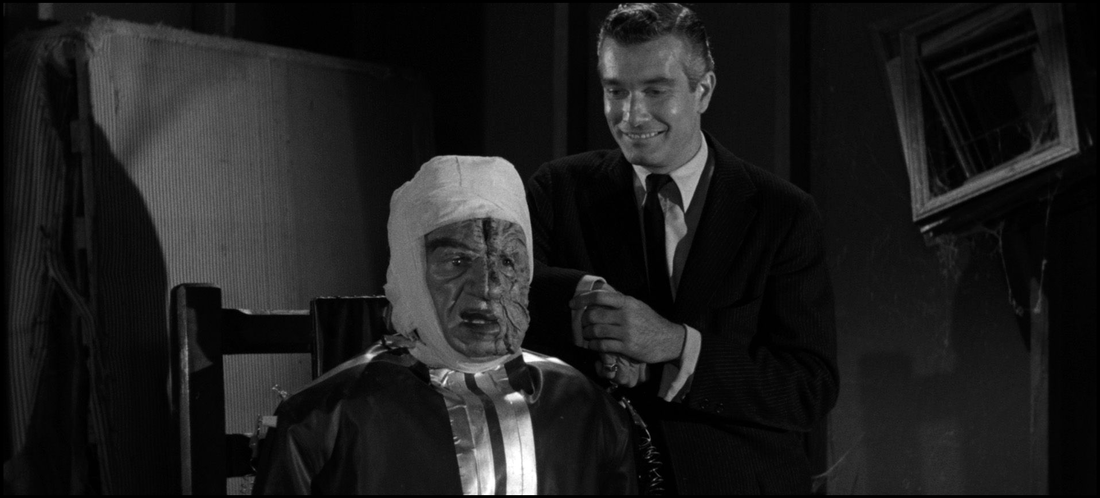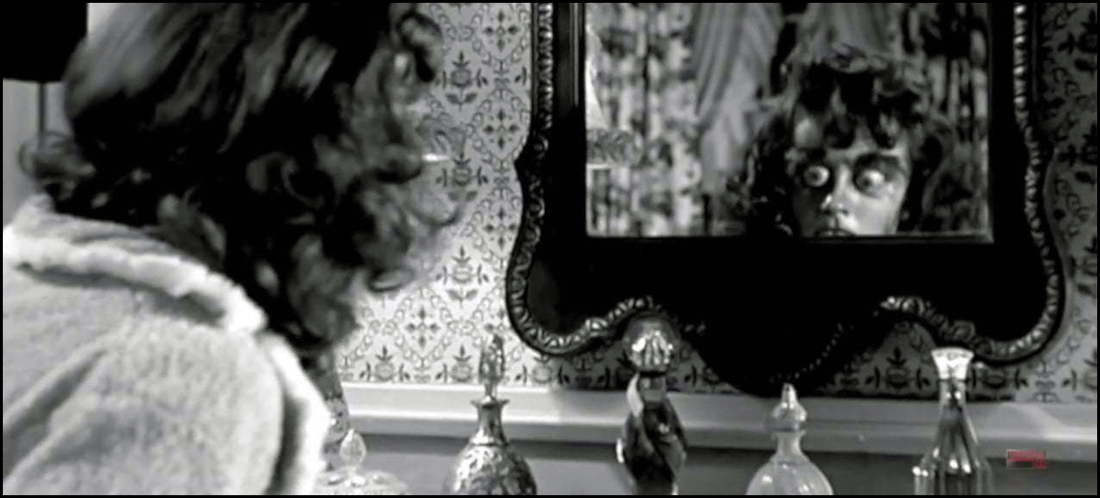Naturally, Hollywood eventually jumped aboard the Frankenstein express, delivering a handful of great (and a few less-so) motion pictures that drove the mythos further. Universal Pictures’ Frankenstein (1931) is revered for properly sensationalizing the Gothic potential of the original Shelley story, and it’s a film that continues to have narrative weight and inspiration to this day. 1935’s The Bride Of Frankenstein pushed the possibilities even further when (gasp!) the surviving good doctor decides to expand on his monstrous family by building dear ol’ Frank a mate. And even the popular Hollywood comedy team of Abbott and Costello stepped into the fray when they decided to go face-to-face with the several monsters in Abbott And Costello Meet Frankenstein (1948), perhaps one of the duo’s most enduring features.
Knowing a good thing to exploit when they see it, Hollywood executives expanded these horror franchises in creative ways; if this is what audiences wanted, then why not deliver more? In the 1950’s, these movers and shakers launched a unique subset – the teenager-centric additions. American youth were coming the subject of more and more features, so it was only proper for Tinseltown to follow along. Films like I Was A Teenage Werewolf (1957) and I Was A Teenage Frankenstein (1957) perhaps best exemplified this emerging trend; and it was only a matter of time before some studio suit got the bright idea to start giving children to these monsters.
And just like that, Frankenstein’s Daughter (1958) was born.
Well … let’s call it ‘hatched.’
(NOTE: The following review will contain minor spoilers necessary solely for the discussion of plot and/or characters. If you’re the type of reader who prefers a review entirely spoiler-free, then I’d encourage you to skip down to the last few paragraphs for the final assessment. If, however, you’re accepting of a few modest hints at ‘things to come,’ then read on …)
From the product packaging: “Dr. Oliver Frank’s ambition is to continue the experiments of his late grandfather, the wicked Dr. Frankenstein. Since he has better luck in the lab than in the backseat of his car, Dr. Frank usually turns the women who reject him into fodder for his experiments. He has special plans for his boss’s young niece, Trudy. Soon, a strange, female creature is running amok in modern Los Angeles. No one is safe in Frankenstein’s Daughter, not even the cool kids rockin’ at poolside!”
Ahem.
There’s a reason why films like Frankenstein’s Daughter are so easily lampooned by those who watch them: though they might have a nice performance or two – or maybe even a nice idea here or there – something’s clearly amiss … and it usually boils down to any lack of intelligent structure on the part of those telling these stories.
For example, it’s easy to understand how the descendants of the original Shelley madman – Dr. Frankenstein – might be socially outcast as a consequence of a bad reputation. He did, after all, create a monster – one who terrorized the village – so it makes sense that his gifted grandson might be forced into some science-based side job in order to continue the family business. See what I mean? Screenwriter H.E. Barrie crafted a perfectly legitimate set of circumstances upon which to base the film’s central character … but the rest of the story? This one unravels very, very, very quickly.
Dr. Frank (played by Donald Murphy) is a bit of a lecher. We see him drawn to every woman in the picture, and – though biology may be his gig – he needs to learn a thing or two about boundaries. He’s little more than a ‘sexual predator in development,’ so I found it also completely believable that he’d channel the anger resulting from constant rejection into his bloody quest for a woman’s head to affix to the top of his Frankenstein monster. Plus, he’s a bit of a practicing misogynist, insisting that a woman’s mind is more easily controlled by suggestion. Yeah … with an attitude like his, it’s no wonder he’s single.
Still, I found it hard to find anything else in this monster stinker that made much sense.
As for the rest of the story?
Well, Daughter plays out more like the alleged monster – the hand from one victim, the arm from another, the legs from still another, etc. – as it appears to have been pieced together with sequences perhaps not all entirely thought out in advance. Characters are given meager tasks to fulfill as the story unspools, and their motivations at times are never quite clear. You’d think they’d want to get their lives together, what with this behemoth roaming about with bloody intentions. Eventually, the police get involved – there’s apparently been a series of robberies related to Trudy’s uncle, Professor Carter Morton (an entirely unconvincing if not robotic performance from Felix Locher) – and, in no time, they’ve pulled their weapons and started firing wildly in a quiet suburban neighborhood. By the time we’re heading toward the film’s conclusion, the audience is suddenly treated to a poolside barbecue complete with a few musical numbers in arguably the film’s most unnecessary and bizarre plot development. While a good time may’ve been had by all onscreen, I’m apt to think audiences weren’t as entertained.
In short, Frankenstein’s Daughter is schlock. Albeit good-natured, it’s still schlock.
Clearly this was the type of small film meant to capitalize on the monster movie craze of its era and maybe even secretly take an affectionate swipe at other emerging trends (Hollywood’s increased focus on teens, film singalong sequences, etc.). Looking back at it from decades in the future, I think it’s easy to poke fun at its ever-widening plot holes, but I suspect that those who made it had a good time with its shtick. None of its truly horrific – certainly not the way it’s played by the actors and actresses – and, despite some reasonably interesting practical make-up work done on the monsters, I suspect no egos were bruised in the making of this film.
Frankenstein’s Daughter (1958) is produced by Layton Film Productions, Inc. DVD distribution (for this particular release) is being handled via The Film Detective. As for the technical specifications? You know, this release actually looks very good; this black-and-white flick has some crisp images, and there was only a sequence or two that came across as a bit sub-par, especially for the era. As for the special features? The disc boasts two commentary tracks (I’m gonna spend some time with this in the days ahead, so look for a second review entirely focused on these), some short documentaries, and an essay from historian Tom Weaver (read it; it’s flattering but mostly biographical in nature). It’s a surprise to have this much to consider with not only an older release but such a forgettable one, so color me impressed.
Recommended … but don’t expect much. Frankenstein’s Daughter is unintentionally comic much of the time, but it still manages to squeeze a few good performances out of Donald Murphy (who hams it up as the true villain), Sandra Knight (as pretty a girl-next-store you’re likely to find in the 1950’s), and Sally Todd (a true tramp who ‘gets what she deserves’ or so one might think). This ain’t Shakespeare … and it shows.
In the interests of fairness, I’m pleased to disclose that the fine folks at The Film Detective provided me with a complimentary Blu-ray Disc of Frankenstein’s Daughter by request for the expressed purposes of completing this review; and their contribution to me in no way, shape, or form influenced my opinion of it.
-- EZ



 RSS Feed
RSS Feed